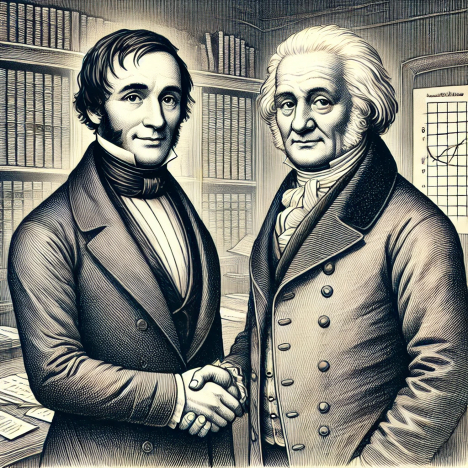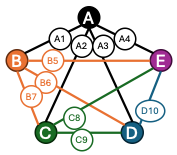As a parent of middle and high schoolers—and with some of their friends still in elementary school—I often find myself answering this familiar question: “When will I ever use math in real life?” It’s a fair question, one I’ve heard many times. So, inspired by my kids’ curiosity and their friends’ occasional inquiries, I’ve decided to write a series of blogs that explain how the math we learn as kids applies to the complex world of cybersecurity.
This first post is sparked by a question from a customer—one of the top 50 service providers in the world, responsible for microsegmenting hundreds of thousands of servers.
The Customer’s Question:
“Yes, your microsegmentation solution offers the best visualization, and the policy impact simulation before enforcement is amazing! But can it scale? Can it handle 100,000+ servers with data spanning days, weeks, months, or even years?”
Our Answer:
“Absolutely! And not just for days, weeks, or months—infinitely.”
Before diving into how, let’s take a step back to some elementary school math and see how the answers were already there for us, thanks to two mathematical giants: Gauss and Euler.
Gauss and Elementary School Math: The Power of Summing

You might know the story of young Carl Friedrich Gauss, who, while in elementary school, stunned his teacher by solving a seemingly time-consuming task in seconds. The challenge was to add all the numbers from 1 to 100. While most kids would add them up one by one, Gauss noticed a pattern. He paired the numbers:
Sum = 1+ 2 + … + 100
Sum = 100 + 99 + … + 1
Sum = 101 * 100 / 2 = 5050
In doing so, Gauss quickly found the method for summing numbers from 1 to any value ‘n’:
Sum = (n + 1) * n / 2
This method is simple yet powerful. It’s a glimpse into how even elementary math can reveal elegant solutions to big problems.
Euler and Middle School Math: The Handshake Problem
Fast forward to middle school math, where another classic problem arises: the handshake problem. Imagine a party of n people where everyone shakes hands with each other exactly once. How many handshakes occur?
The first person shakes hands with n-1 people, the second with n-2, and so on. The total number of handshakes is simply the sum of all these interactions, which we now know (thanks to Gauss) can be calculated using:
Sum = 1 + 2 + … + (n – 1)
Sum = (n) * (n-1) / 2
Now, while Euler didn’t directly work on the handshake problem, he did work on his famous “Seven Bridges of Königsberg,” which is arguably the foundation for graph theory and relates closely to the “handshake lemma.”

The Infinite Microsegmentation Policy Impact Simulation
Now, let’s connect this back to microsegmentation—specifically, policy impact simulation.
One of the biggest challenges when implementing microsegmentation is ensuring that granular, zero-trust policies don’t disrupt legitimate traffic flows. That’s why the ability to simulate how policies would have impacted historical traffic before enforcing them is so critical.
Most solutions for this, have limitations:
- Simulations are often capped at a few days of data,
- The process can take minutes or even hours for large-scale networks,
- And when you’re simulating across hundreds of thousands of assets, it quickly becomes impractical.
At ColorTokens, however, our Xshield solution allows policy impact simulation over an infinite time scale—even for networks with 100,000+ assets.
How? Because of the math principles we just discussed.
In a network with n servers or nodes, if we structure our data correctly the potential traffic flows between them can be thought of like the handshake problem. The maximum number of possible flows, or edges, is given by the same method:
Sum = (n) * (n-1) / 2
So, for 10,000 nodes, the upper bound of possible flows is approximately:
10,000 * 9,999 / 2 ~ 100,000,000 / 2 ~ 50 million
No matter how far back you extend the time period—days, months, years—the total number of flows upper bound by this number. This mathematical limit allows us to simulate policy impacts at scale without slowing down or introducing delays, making our solution highly scalable for even the largest environments.
Bringing Math to Life in Cybersecurity
Who would have thought that concepts like Gauss’s summing formula and Euler’s handshake problem could help secure a network of 100,000+ servers? But that’s exactly what’s happening here. Math is not only relevant—it’s essential in solving real-world challenges like scalable microsegmentation.
So, the next time someone asks you how math applies to life after school, you can point to Gauss, Euler, and the critical role they play in modern cybersecurity.
Got questions about microsegmentation or scaling your policy impact simulations? We’re here to help.





